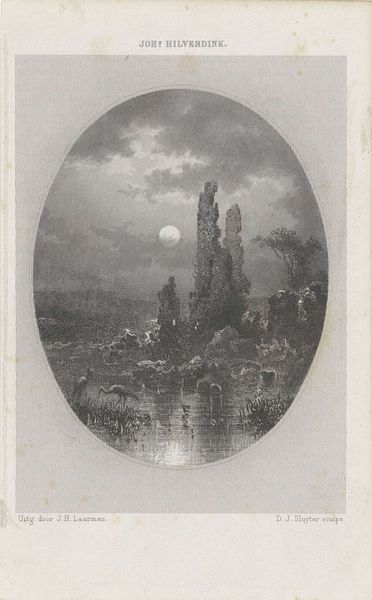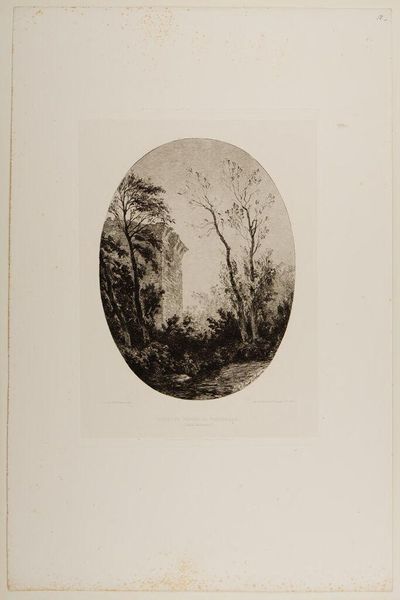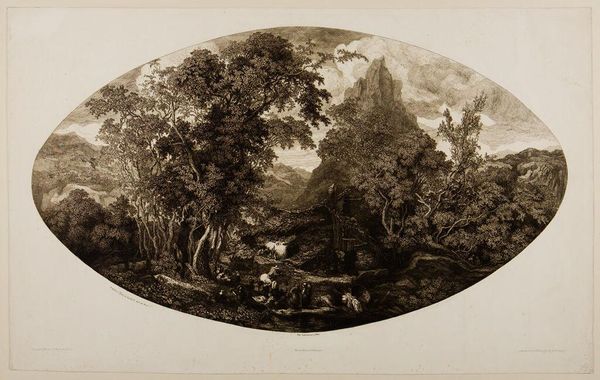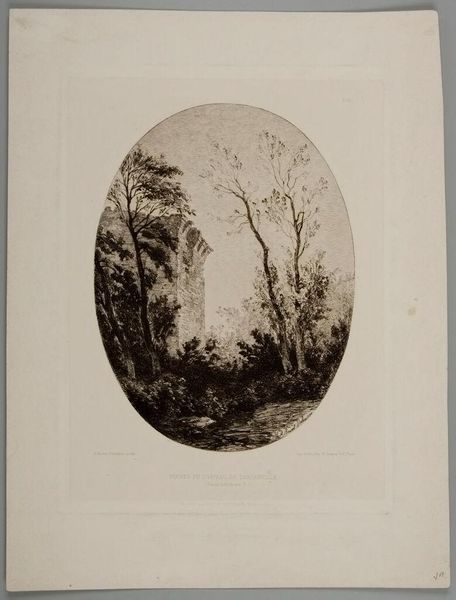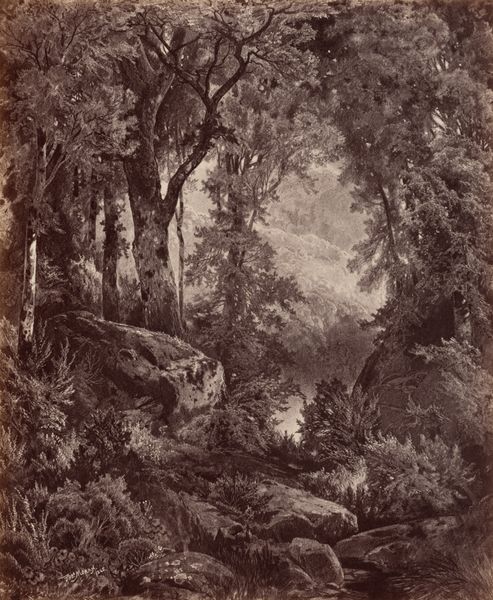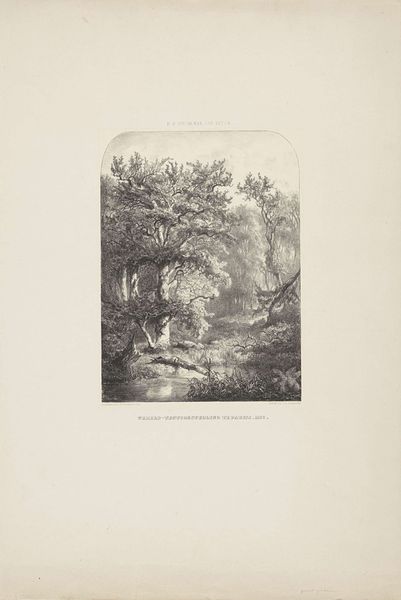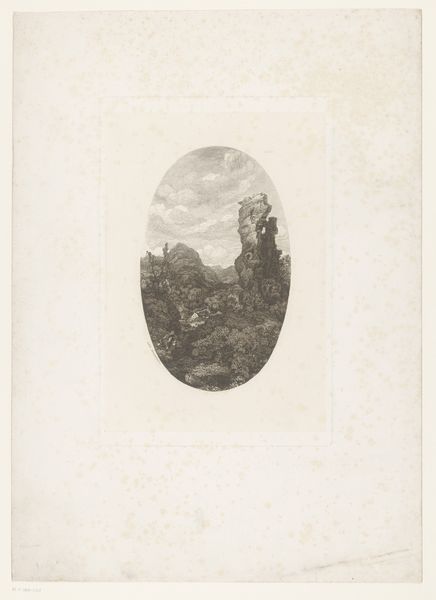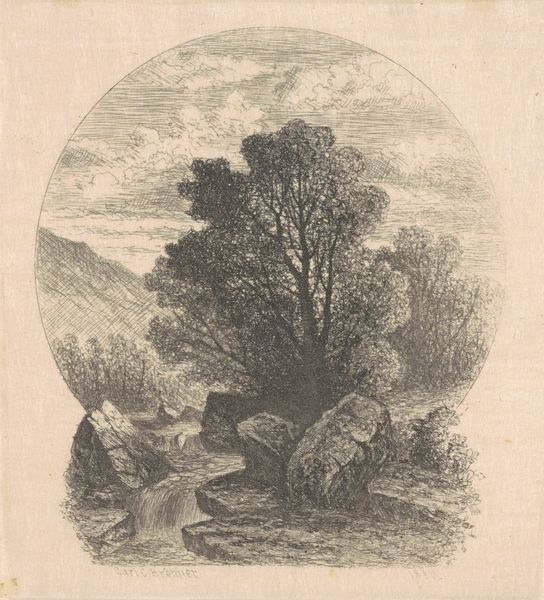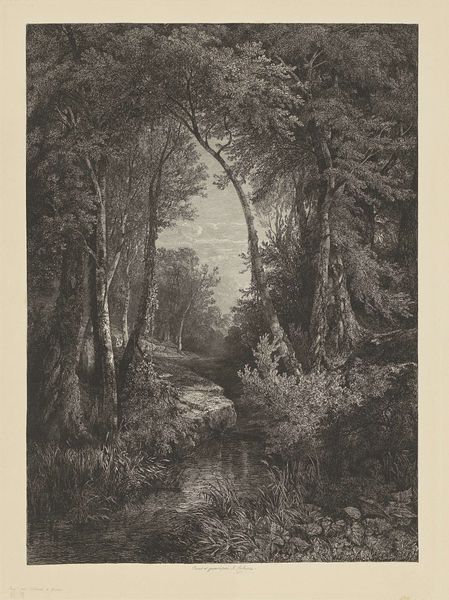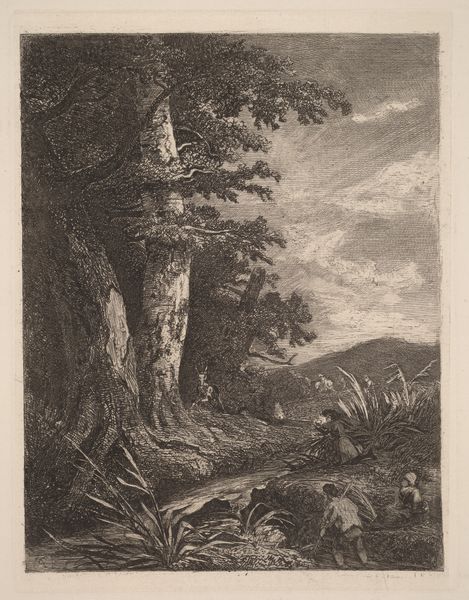
Dimensions: height 135 mm, width 96 mm
Copyright: Rijks Museum: Open Domain
Curator: Before us is Dirk Jurriaan Sluyter’s “Landschap bij nacht”, or “Landscape by Night”, dating from before 1870. It's currently held in the Rijksmuseum. Made with engraving, it strikes me as both meticulously crafted and haunting. Editor: My initial impression is one of tranquility, albeit tinged with melancholy. The dark lines of the trees contrast with the lighter reflection of the moon in the water. There is an overwhelming sense of stillness, doesn't it? Curator: Absolutely. Let’s consider the socio-political context. Night landscapes became increasingly popular during the Romantic era as they embodied a longing for something beyond the everyday, reflecting a retreat from the rapidly industrializing world. There is this clear focus on themes of chiaroscuro and the natural world. What does this suggest about society at that time? Editor: Well, consider the increasing urbanization of the era. Landscapes, especially those cloaked in the mystery of night, allowed viewers to reconnect with a more "authentic" past. Sluyter’s realism seems to depict the relationship between humans and their external world and this gives us the romanticized landscape that emerged from this social need to return to something uncorrupted. The public was ready for an image such as this. Curator: Do you see a specific power structure manifested? Consider the compositional balance: the central placement of light with these ominous surrounding, looming branches. Editor: It almost represents the internal struggles of the patriarchy, with power that can no longer keep up the darkness creeping in, in the dead of the night. This power of self seems to almost evaporate into the gloom and become less solid to take its organic place as nature intended. Is Sluyter portraying some of his anxiety through this work? It feels quite pertinent. Curator: That's a really insightful interpretation. Looking at this piece, its quiet, intimate quality reminds us of the power of art to speak to anxieties across different generations. Editor: Indeed. It showcases how historical forces profoundly affect not only subject matter, but technique and mood.
Comments
No comments
Be the first to comment and join the conversation on the ultimate creative platform.
